Silver Needle Noodles
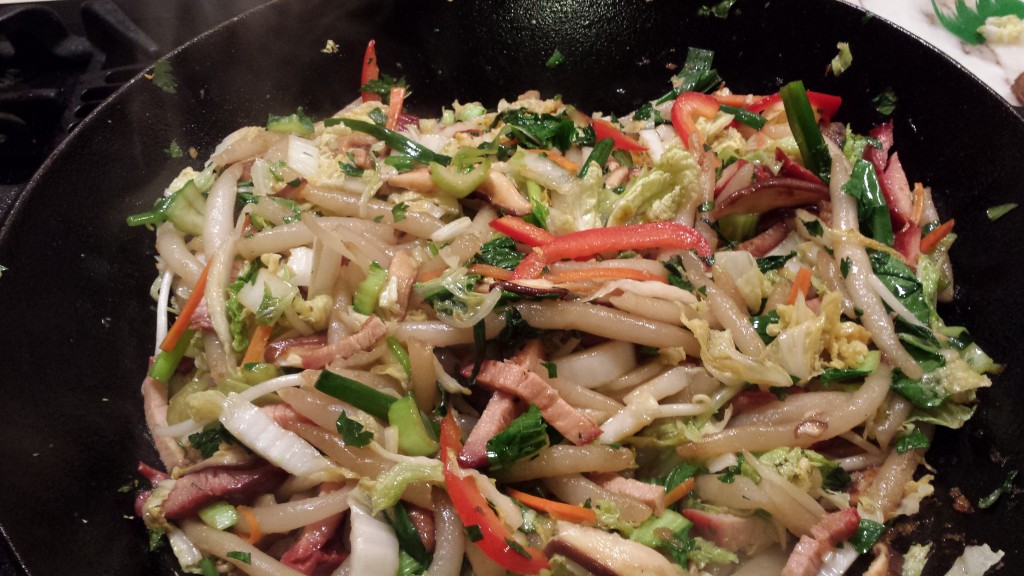
Silver Needle Noodles, aka Rat Tail Noodles
My first experience of dim sum was at the House of Hong in 1990 when I worked at Suzzallo Library at the University of Washington. The occasion was the birthday of one of the librarians from another department. I had no idea what was about to happen when we all went into the restaurant and were seated at a huge round table with a giant lazy susan in the middle. Then, the various carts began to arrive, along with many pots of tea, and everyone started choosing dishes. Being clueless about what to try, I just sampled from things that the others chose. I was not impressed. Now that I’m familiar with dim sum I know which items I like but at that particular lunch almost everything that was chosen for the table was fried and/or had some unidentifiable creamy filling. It took a few more years before I went back to dim sum and learned how delicious it can be. Sometimes too salty but always fun.
My favorite dim sum dishes these days are sticky rice, gai lan, and silver needle noodle (also known as rat tail noodle). The chewy texture of the noodles combined with the typical flavors of Asian food is made irresistible by the addition of Chinese celery. It is the must have ingredient for this dish. Other suggested ingredients for silver needle noodles are: soy sauce, sesame oil, ginger, chinese barbecue pork loin, shiitake mushrooms, green onions, baby bok choy, mung bean sprouts, carrots, red peppers and napa cabbage.
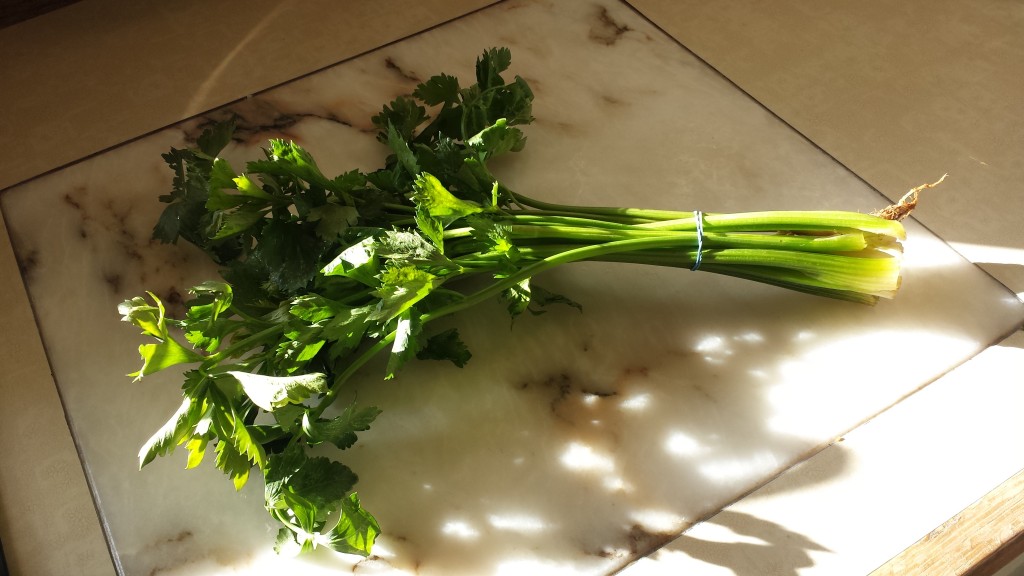
Chinese Celery
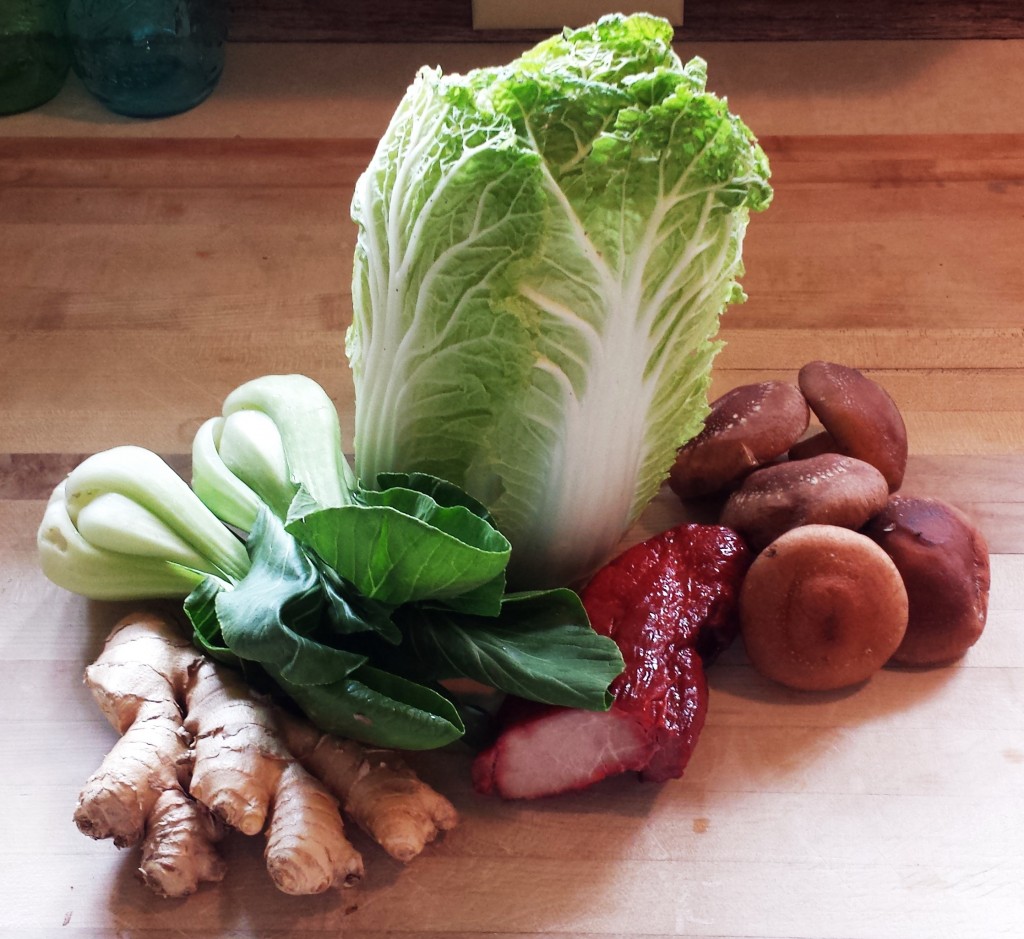
Napa cabbage, baby bok choy, ginger, Chinese barbecued pork, shiitake mushrooms
Other than that I tend to use whatever I have around for the rest of the vegetables.
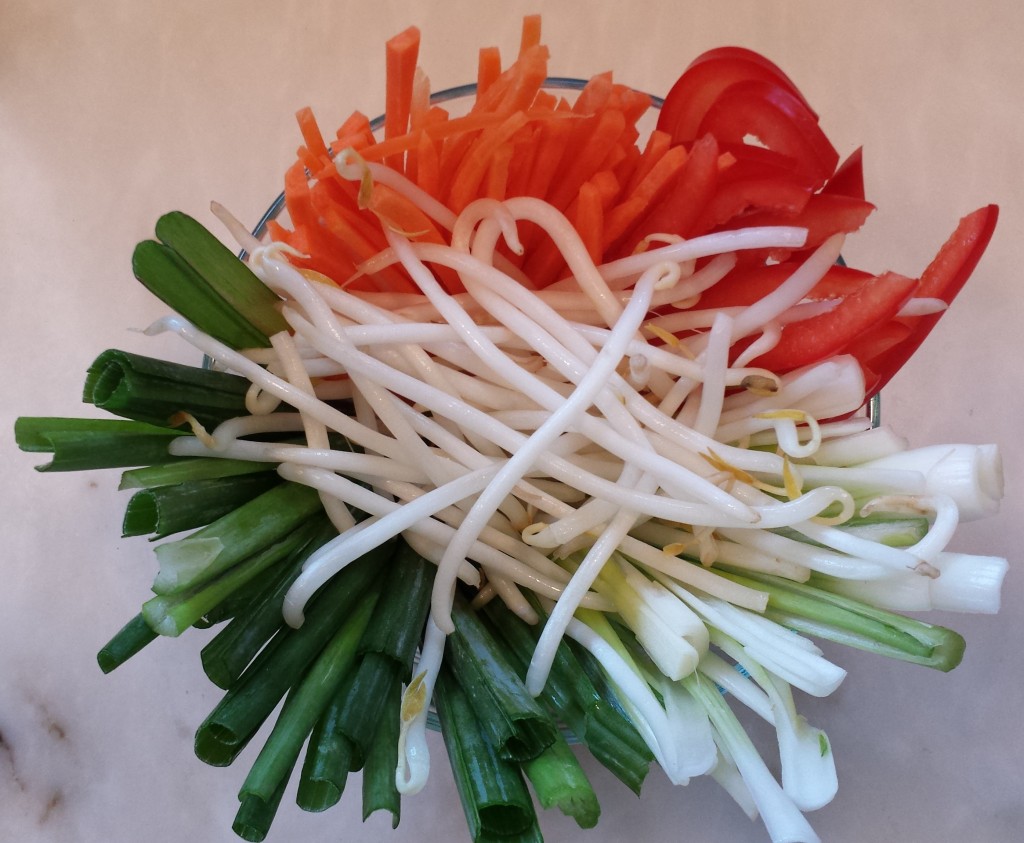
Carrots, red pepper, green onions, mung bean sprouts
Silver needle noodles are hand rolled and translucent after cooking. The slightly irregular shapes and sizes of the noodles resemble the tails of rats and the mouth feel reinforces the concept. I have never seen them sold at stores here in Seattle so I just make them myself. It’s somewhat labor intensive but super simple. If you can make a play dough snake, you can make silver needle noodles. Although rat tail noodles are traditionally a Chinese new year dish, around Halloween it always occurs to me that this would be a fun dish to make with children and serve right before trick or treat time.
The biggest challenge of making silver needle noodles is finding the dry ingredients such as wheat starch. While many recipes call for a combination of rice flour and some form of starch (tapioca, wheat, potato, corn), I have found that using a combination of tapioca starch and wheat starch makes the noodles both chewy and translucent.
I have been the most successful using this recipe but on a recent trip to Uwajimaya to get the dry ingredients, I couldn’t find any wheat starch. After staring at the shelf for about five minutes I came across this mix which turned out to be the perfectly proportioned mixture of wheat and tapioca starches, all in one bag.
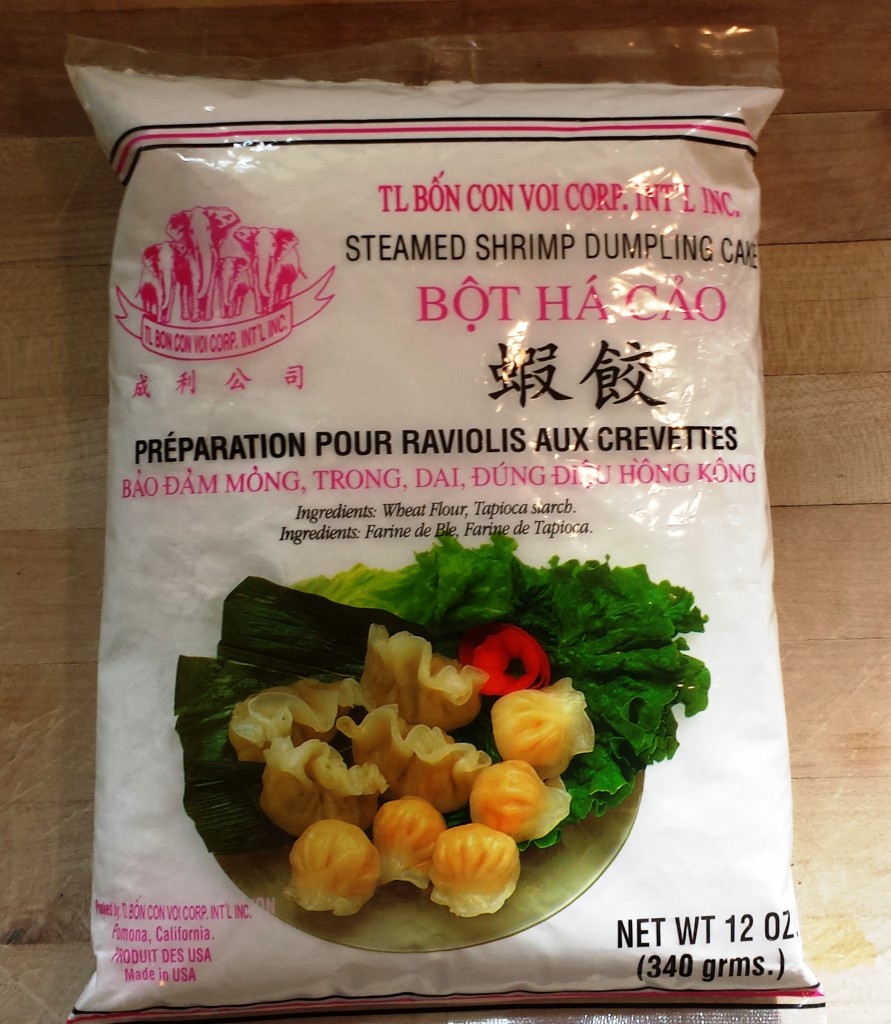
Har Gow Mix
It says it contains wheat flour on the package but I’m pretty sure it is actually wheat starch. You can tell there is nothing but starch in the package by the feel of it. When you squeeze it it feels sort of squeaky – as if there is friction. The reason I knew it would work? It is the same mixture of starches used to make steamed shrimp dumplings, also known as crystal skin dumplings. It worked like a charm.
Silver Needle Noodles
Ingredients
3 1/3 cups of Har Gow mix (see above)
pinch of salt
1 1/2 cups boiling water
1 tbsp oil (I used olive oil)
Procedure
- In a large mixing bowl combine the har gow mix and the boiling water. Stir with a chopstick until the dough is cool enough to handle. You might think the dough is too dry but don’t add more water.
- Knead dough a few times in the bowl until you’ve created a ball of dough. Add the oil, knead a few more times then transfer to a board and knead until all of the oil is incorporated into the dough.
- Roll the dough into a log. Cut off a chunk to work with and wrap the rest in plastic wrap.
- Take a 1/2 inch ball of dough and roll it on the board or between your hands to form a “snake”
- Repeat until all the dough is used up
- Boil the noodles for about 4 minutes. Take two or three noodles out of the pot and rinse under cold water. The slight translucence will tell you they are done. If not cook a minute longer and check again. Don’t over cook or you’ll have a pot full of gummy worms. I find it best to boil them in small batches.
- At this point you can either refrigerate the noodles in an air tight container or use them in your stir fry. I wouldn’t make these more than a day in advance – otherwise they may be too mushy and sticky.
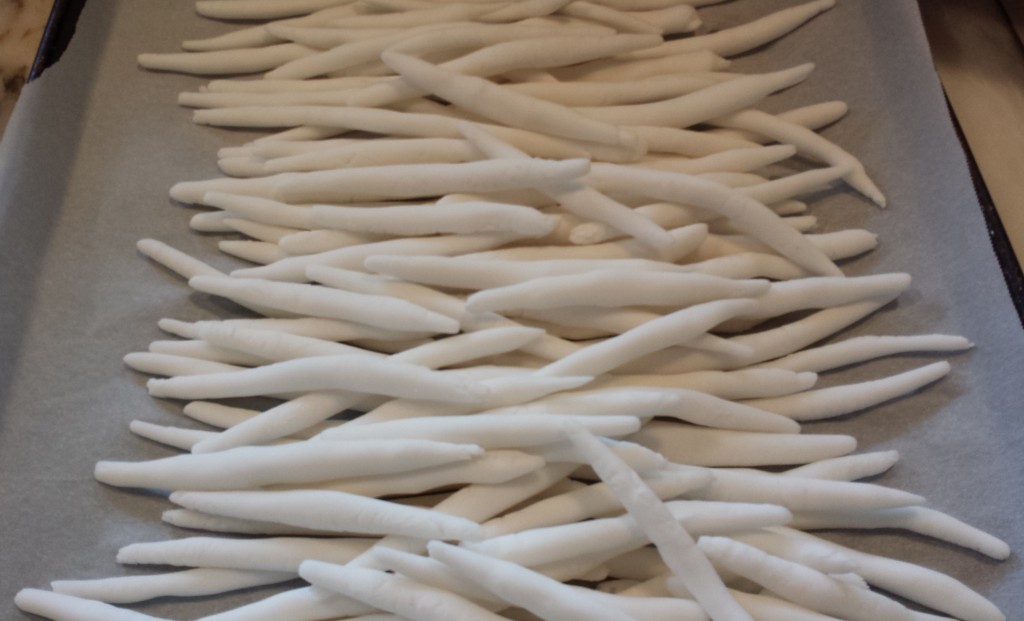
Rat tail noodles rolled and ready to boil
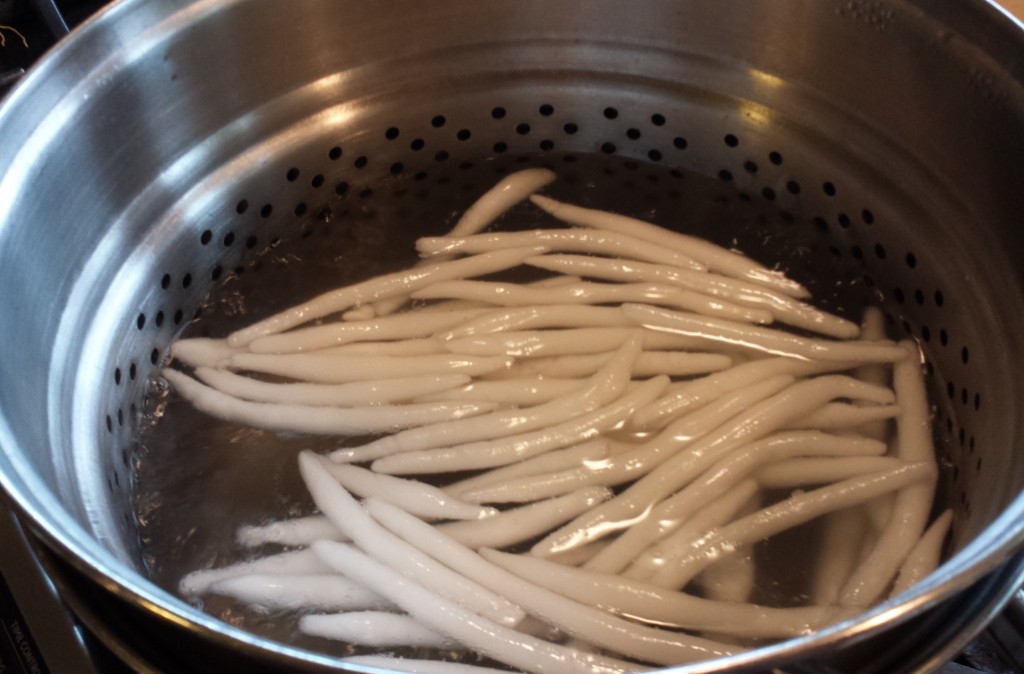
Silver Needle Noodles in the pot
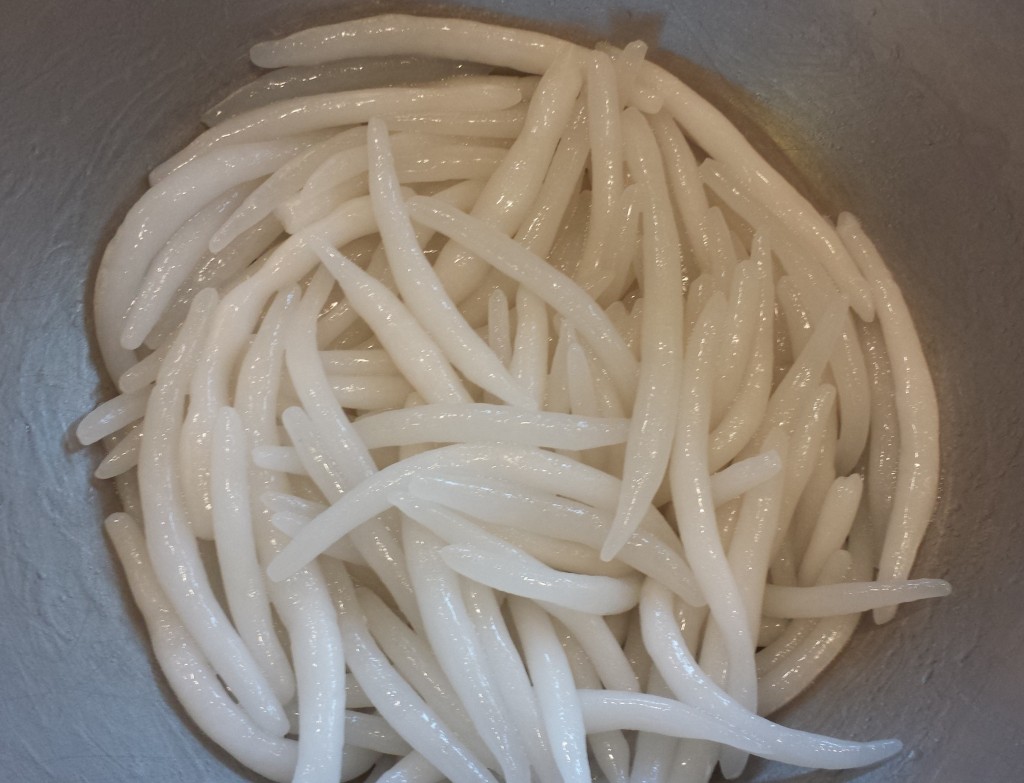
Noodles are cooked and ready for stir fry